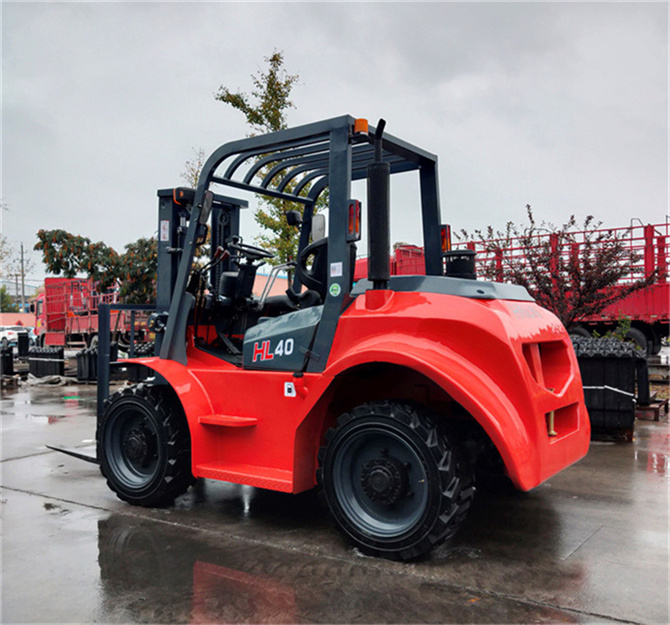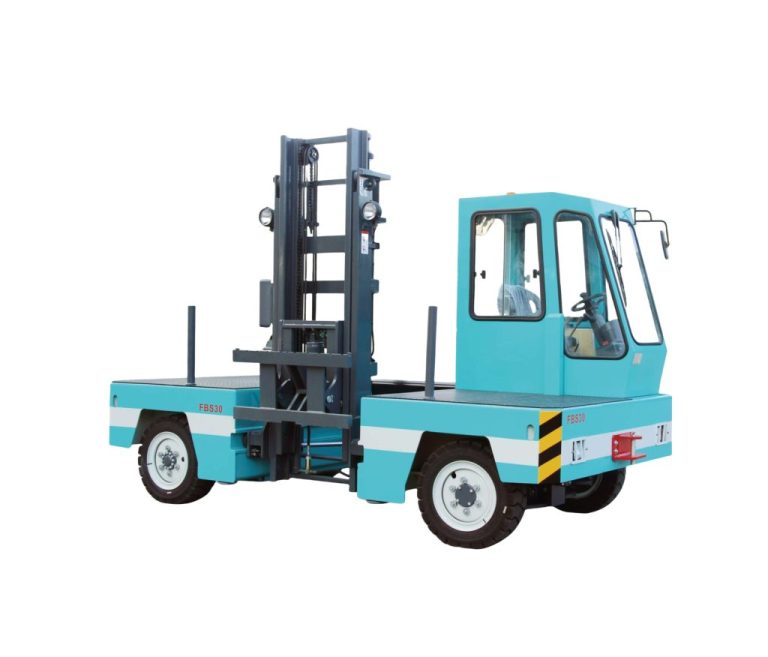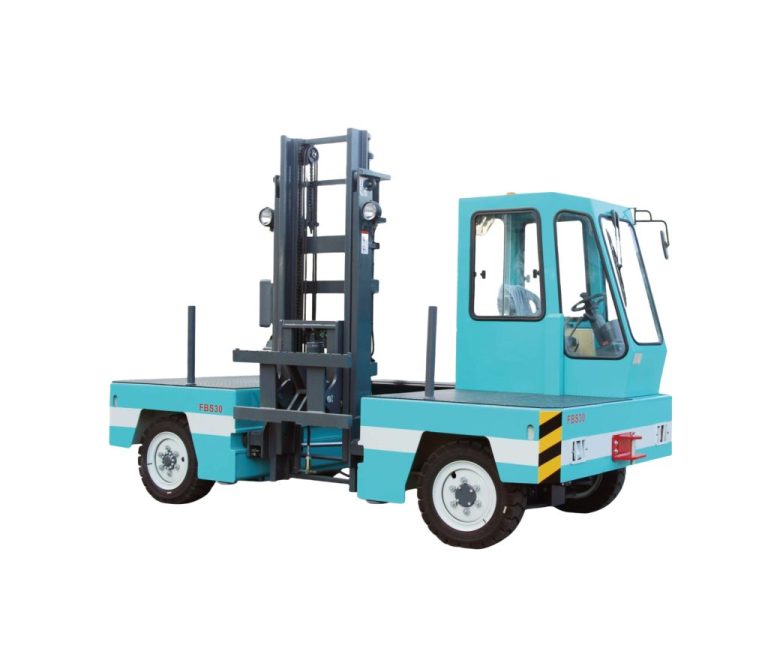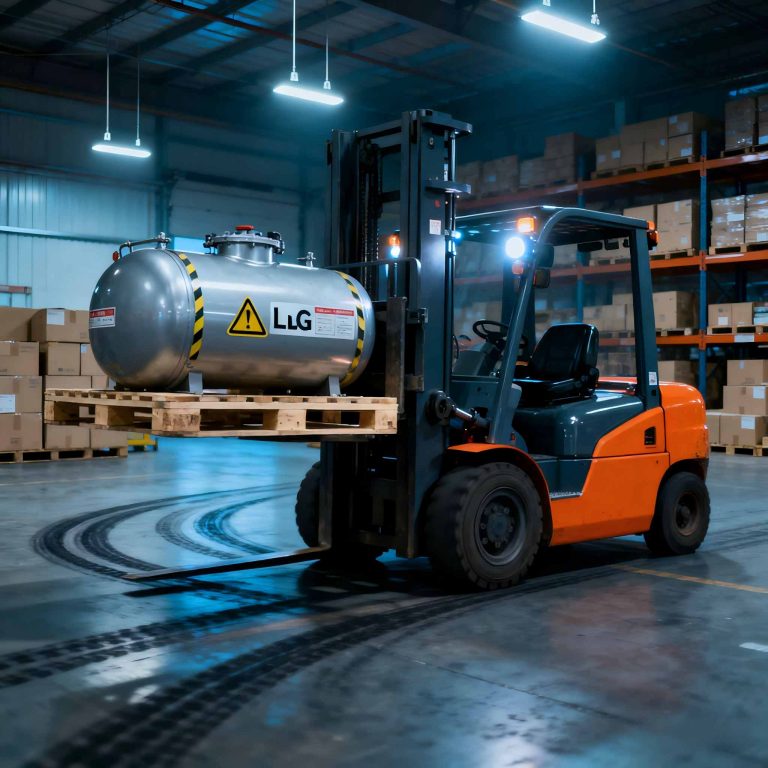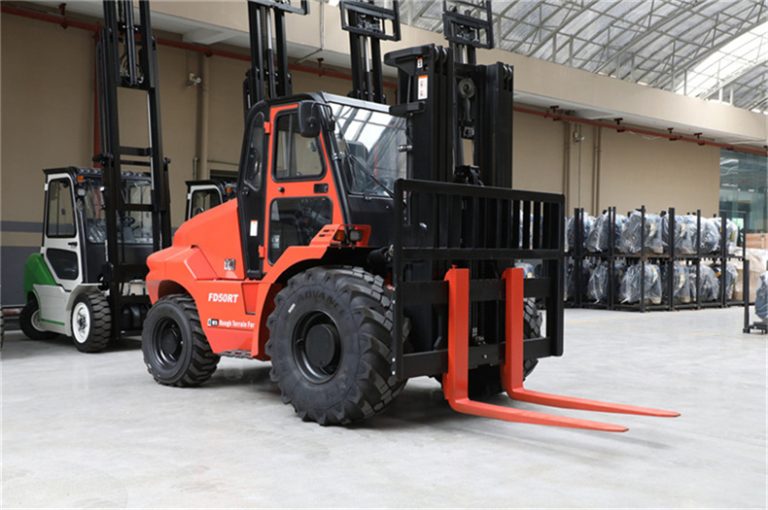Rough terrain forklifts serve as essential equipment for industries like construction, lumber yards, and mining. Daily work here means dealing with bumpy ground and massive loads. These machines absolutely must be tough, dependable, and above everything else, safe. When you’re driving across rocky construction sites or muddy fields, the last situation you want involves a forklift that puts safety at risk. That’s exactly why we’re exploring the five critical, life-preserving features your rough terrain forklift needs to have. Keeping operators and worksites secure depends on them. If you manage a site, operate the machine, or own the business, this guide helps you grasp what matters most when picking a rough terrain forklift.
Why Safety Matters in Rough Terrain Forklifts
Operating a rough terrain forklift isn’t anything like cruising a car down a smooth highway. You handle uneven surfaces, steep hills, and incredibly heavy loads. These can easily tip the scales at five tons or way more. Just one wrong move—whether a tip-over or a falling load—can cause severe harm or worse outcomes. Industry numbers show forklift accidents lead to about 85 deaths and 34,900 really serious injuries every year just in the U.S. That’s not merely a number; it’s a loud warning signal. Safety elements aren’t just extras—they’re utterly vital for protecting your team and keeping your work moving right.
Honestly, a construction site leaves zero room for cutting corners. Having the correct safety features decides between a productive workday and a frightening rush to the emergency room. So, what are the non-negotiable features for a rough terrain forklift? Let’s dive in and explore them.
1. Advanced Stability Control Systems
What It Does
Rough terrain forklifts frequently work on slopes or bumpy ground. The risk of tipping here is naturally high. Clever stability control systems use sensors watching the forklift’s balance constantly. If the machine senses a possible tip-over—for example, when hoisting a four-ton load up a ten-degree slope—it automatically responds. It might slow down or lock the hydraulic system. This stops risky movements immediately.
Why It’s Life-Saving
Picture yourself on a construction site. You’re moving a pallet of bricks up a muddy hill. Without stability control, a small shift in weight might easily send the forklift crashing over. Stability systems act like a backup set of eyes. They spot dangers before they turn into full-blown accidents. This becomes super important for heavier models. Think about those handling five to ten tons. The dangers there are simply much greater.
Real-World Example
Consider a recent quarry project. A seven-ton rough terrain forklift had stability control built-in. It prevented a serious scare when an operator misjudged a slope. The system activated right away. It slowed the machine and steadied the load. This action saved the operator from a likely rollover. That kind of security? You truly can’t set a price tag on it.
2. Overload Protection Technology
What It Does
Overload protection systems stop the forklift from lifting anything heavier than its rated capacity. Sensors keep track of the weight sitting on the forks. They warn the operator if the load goes past safe limits. Usually, this involves loud alarms or bright warnings on a digital screen. Some setups even lock the hydraulic lift completely. This halts unsafe lifting operations dead.
Why It’s Life-Saving
Hoisting too much weight invites disaster. Forklifts carrying overloads can tip over. They might drop their cargo or wreck vital parts. This puts everyone nearby in immediate danger. Overload protection makes sure you always stay within safe boundaries. It doesn’t matter if you’re handling a three-ton pallet or a giant ten-ton container. The system has your back.
Practical Tip
Always double-check the forklift’s load capacity chart. You’ll usually find this posted inside the operator’s cabin. For instance, a five-ton rough terrain forklift might manage 5,000 kg when lifting low. But at full mast extension? Maybe only 3,500 kg. Overload protection catches these important differences. Still, a smart operator always knows their own machine’s exact limits too.
| Model | Load Capacity | Max Lift Height | Safe Load at Max Height |
| RT-50 | 5 tons | 4 meters | 3,500 kg |
| RT-70 | 7 tons | 4.5 meters | 4,800 kg |
| RT-100 | 10 tons | 5 meters | 6,500 kg |
3. Anti-Rollback and Slope Assist
What It Does
Anti-rollback systems stop the forklift from rolling backward on hills. This is especially crucial when starting from a complete stop. Slope assist works alongside this. It keeps control steady when going downhill. This ensures the machine never picks up scary, uncontrollable speed.
Why It’s Life-Saving
Imagine this scenario: You’re hauling a six-ton load up a gravel-covered hill. You pause briefly to make an adjustment. Without anti-rollback, the forklift could easily slide backward. This risks a terrible crash or the load tumbling off. These clever systems hold the machine firmly in place. They give operators real confidence when tackling tricky ground.
A Quick Anecdote
I talked with a site supervisor once. He praised anti-rollback heavily after his team dodged trouble on a steep logging site. The forklift just held its position. The operator didn’t need to sweat bullets struggling to regain control. It’s one of those features you might not think about much. That is, until it directly saves your day.
4. Enhanced Visibility and Camera Systems
What It Does
Rough terrain forklifts often come with big windows. Many also include 360-degree visibility setups or handy rearview cameras. These give operators a crystal-clear view all around them. Some models add sensors too. These detect obstacles or people walking nearby. They trigger instant warnings to stop collisions before they happen.
Why It’s Life-Saving
On a bustling construction site, blind spots pose a constant danger. A worker might stand directly behind a massive twenty-ton load. That load completely blocks the operator’s view. A camera system can spot that person easily. Better visibility drastically cuts the chance of collisions. These crashes rank among the top reasons for forklift-related injuries everywhere.
Pro Tip
If your forklift has a camera, don’t solely depend on that screen. Make it a habit to do a fast walk-around before starting your shift. It’s an old-school move. Yet, it pairs perfectly with modern, high-tech visibility tools.
5. Operator Presence Detection
What It Does
Operator presence detection systems make sure the forklift only runs when the driver sits properly and holds control. If the operator leaves the seat or isn’t positioned right, the system shuts down movement. It also disables hydraulic functions. This directly prevents many potential accidents.
Why It’s Life-Saving
It happens too easily. An operator hops off the forklift quickly to check something. They might accidentally leave it in gear. Without this smart system, the machine could suddenly lurch forward. This endangers anyone standing close by. This feature is absolutely essential for rough terrain forklifts. Why? Because sudden movements on uneven ground often lead to catastrophe.
Real-World Impact
Recall a warehouse visit last year. An operator stepped off his forklift to adjust a load. He didn’t realize it was still in gear. The presence detection system shut everything down immediately. It stopped a potential disaster cold. It’s a small feature, no doubt. But it packs an incredibly powerful safety punch.
About JinChengYu FORKLIFT
Looking for truly dependable rough terrain forklifts? JinChengYu FORKLIFT stands out as a trusted supplier. They operate from Qingdao, Shandong Province. Their strong product lineup includes tough 4×4 rough terrain forklifts. These machines get built specifically for demanding settings. JinChengYu focuses hard on quality, long-lasting strength, and critical safety. Their equipment handles heavy loads—think up to ten tons. It comes ready with advanced safety features like stability control and overload protection. Backed by a solid R&D center and sales network spanning the globe, JinChengYu delivers more than just machines. They provide genuine peace of mind for fields like construction, mining, and logistics. Their dedication to “continuous improvement” and making customers happy makes them a top pick. People choose them for rugged, reliable forklifts that won’t quit.
Conclusion
Picking a rough terrain forklift isn’t just about raw power or the initial cost. It’s about making sure your team gets home safely every single day. Remember those five life-preserving features? Stability control, overload protection, anti-rollback, enhanced visibility, and operator presence detection. These aren’t just fancy add-ons. They’re vital tools protecting lives and keeping your work flowing smoothly. Choosing a forklift equipped with these features means more than meeting safety rules. You’re building a workplace where everyone concentrates on the job itself, not avoiding accidents. Whether you’re shifting five-ton loads in a rocky quarry or navigating a muddy, chaotic construction site, these features are absolutely non-negotiable for true safety.
FAQs
What makes stability control a must-have for rough terrain forklifts?
Stability control proves crucial because these forklifts constantly work on uneven or sloped ground. This feature watches the machine’s balance. It adjusts operations to stop tip-overs. This matters hugely when moving heavy loads like five tons or more. A tip-over could be catastrophic.
Can I use a rough terrain forklift without overload protection?
Technically, yes, you could. But it’s incredibly risky. Overload protection guarantees the forklift never lifts beyond its safe capacity. This prevents awful accidents like tip-overs or dropped loads. It’s a life-saving element you’ll definitely want on any rough terrain forklift handling heavy materials.
How does operator presence detection improve safety?
This system ensures the forklift moves only when the operator sits correctly and stays in control. If the operator steps off, the machine stops instantly. This prevents unintended movements. Such movements could easily cause collisions or injuries, especially on unpredictable rough terrain.
Are cameras necessary for rough terrain forklifts?
Cameras aren’t strictly mandatory by law everywhere. But they change the game completely. They wipe out blind spots. This is super important when managing large loads. That makes cameras a must-have for safe travel on busy or uneven worksites where seeing everything is tough.
Why choose a rough terrain forklift with anti-rollback?
Anti-rollback stops the forklift from sliding backward on slopes. This happens often in rugged places like construction sites. It’s a genuine life-saving feature. It keeps both the operator and the valuable load secure and stable on tricky inclines.

